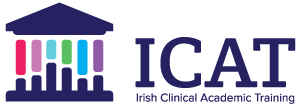Supervisor View 2
October 3, 2016Supervisor View Full Details 2nd
October 12, 2016Prof Richard Carson
Department:Trinity College Institute of Neuroscience and School of Psychology
Organisation:Trinity College Dublin
Webpage:https://www.tcd.ie/Neuroscience/partners/PI%20Profiles/Richard_Carson.php
Email AddressEmail hidden; Javascript is required.
- neuroscience and mental health
- bioengineering/medical devices
- Other - please suggest keyword(s):
- Medicine
- Sports and Exercise Medicine
- Dementia
- Geriatric Medicine
- Neurology
- Neurophysiology
- Radiology
Professor Carson?s research group employs multiple imaging technologies ? including ?resting-state fMRI and diffusion weighted imaging, to examine the relationships between structural and functional brain connectivity that mediate expressions of frailty and cognitive decline. In combination with electrophysiological measures such as transcranial magnetic stimulation (TMS), these methodologies are also being used to provide prognostic assessment, and tailor programs of rehabilitation for individuals following stroke. His team has developed an upper limb personal trainer: the SMART Arm? - a non-robotic device that enables stroke survivors with upper limb weakness to drive recovery of their arm. In related research - working with colleagues at the University of Alberta, he has been exploring the use of tele-rehabilitation. In this case, the therapy is undertaken in the home while being supervised from a remote location via an internet link. A further specific focus of his work is the adaptive processes that are engaged by some individuals to obviate the behavioural consequences that would otherwise arise from neural degeneration. In this regard, his team are exploring the range of factors ? including genetic variations in the pathways that mediate adaptive neural plasticity, that give rise to individual differences in resistance to brain damage and degeneration.
Systems have been introduced with the purpose of aiding stroke rehabilitation by:
1) Identifying patients with potential for recovery that might otherwise go unrecognised
2) Setting individual rehabilitation goals and plans
3) Managing the expectations of patients, their families, and health professionals
The PREP algorithm offers particular promise. It is based upon three steps:
1) Standardised arm movements scored by clinicians
2) Testing motor pathways to the affected arm by means of transcranial magnetic stimulation (TMS)
3) Diffusion weighted imaging (DWI) of the brain to examine the structural integrity of the posterior limb of the internal capsule on each side of the brain
Although the PREP algorithm does quite well, there remains scope to enhance the utility of this type of approach by several means.
i) There is accumulating evidence that the microstructural integrity of the corpus callosum is associated with the degree of functional deficit, and with scope for recovery.
ii) There are now methods of analysing DWI data that perform much better than the diffusion tensor models that are usually applied in clinical settings. These have particular utility when applied to brain regions such as the corpus callosum that contain crossing fibres, and in following the path of fibres descending through the internal capsule (e.g. Ruddy, Leemans & Carson, 2016).
iii) These methods also offer the prospect of relating the functional integrity of descending projections from non-primary motor areas (e.g. dorsal premotor cortex and supplementary motor area) to functional outcomes.
The aim of the project will be to develop enhanced algorithms to predict the potential for recovery of arm and hand function following recent stroke, by:
a) using advanced methods to characterise descending and callosal fibre tracts
b) tracking descending corticospinal fibres above and below the internal capsule, including those that project from non-primary motor areas.
